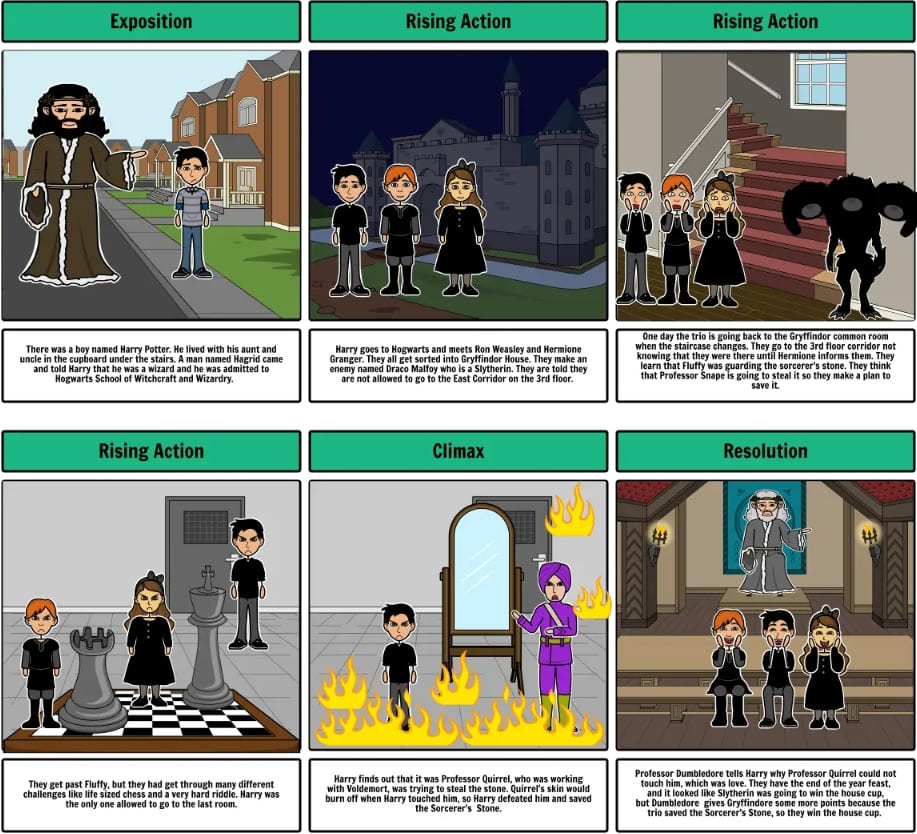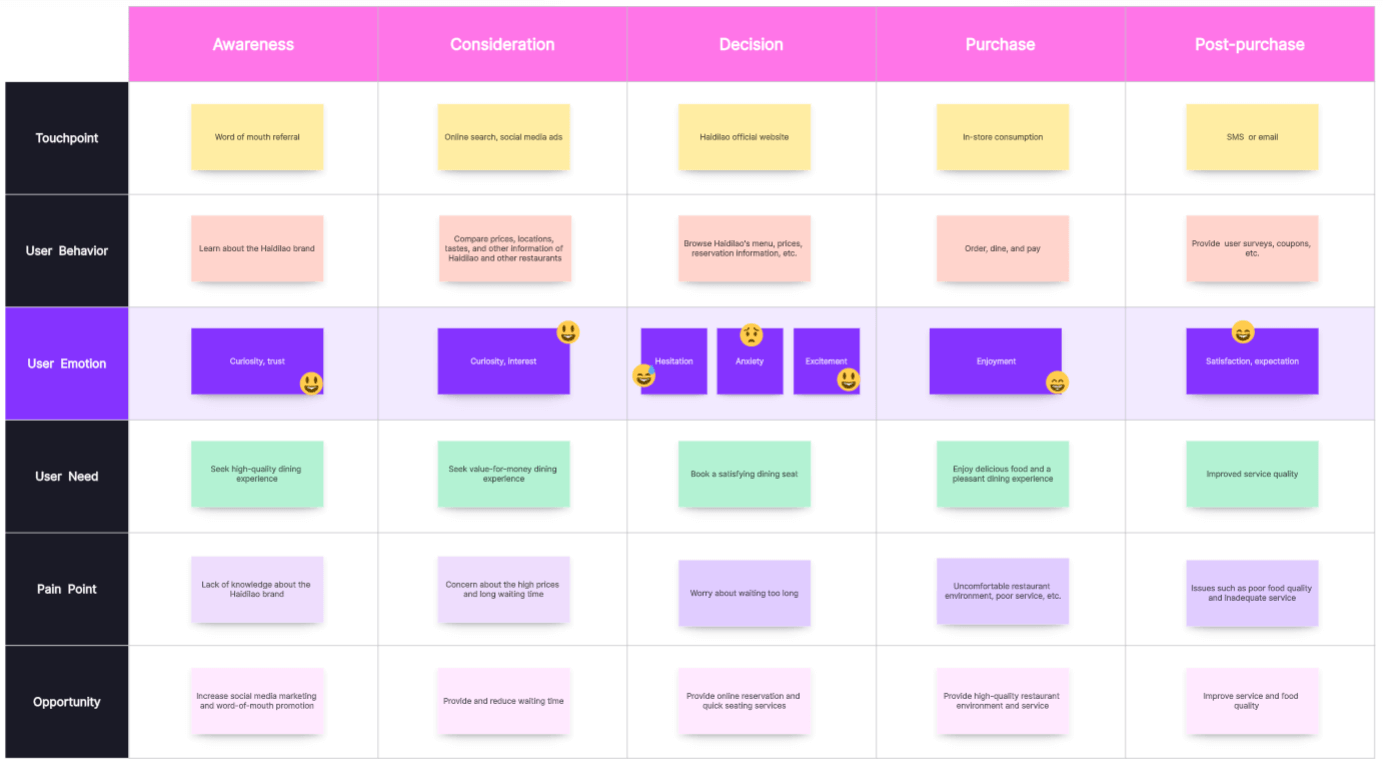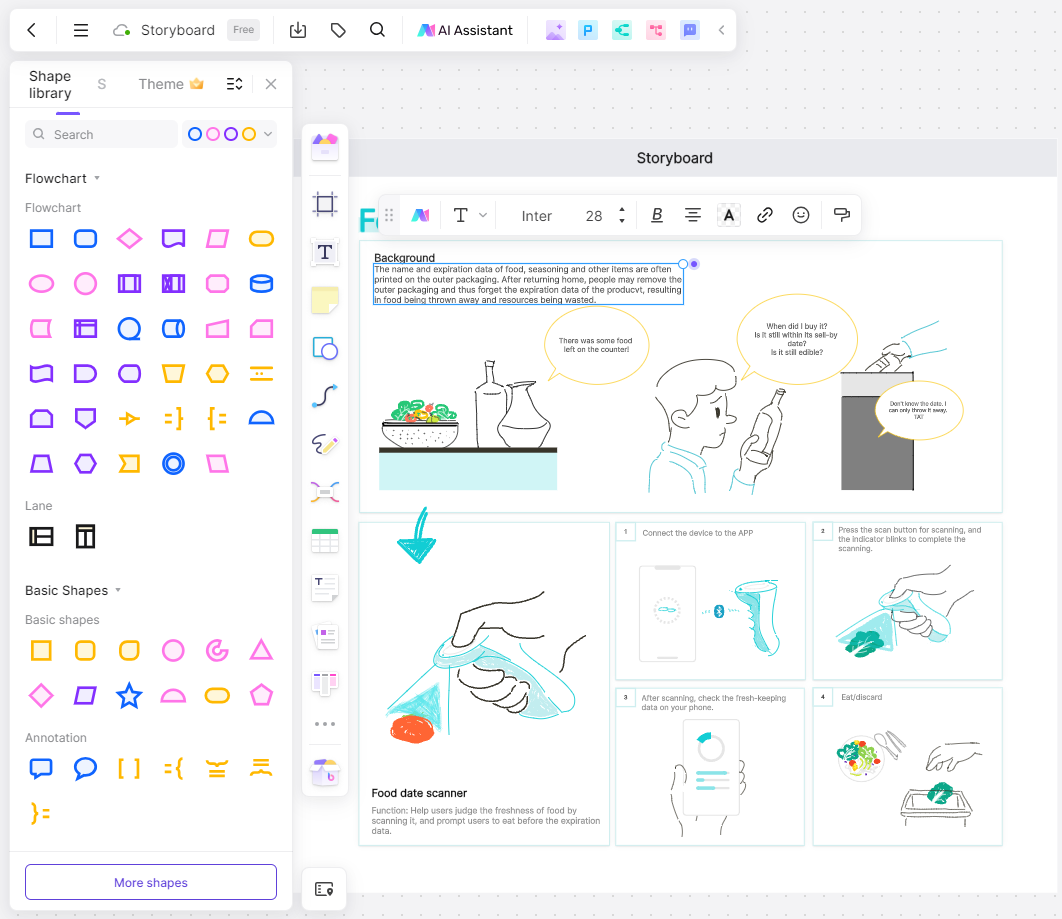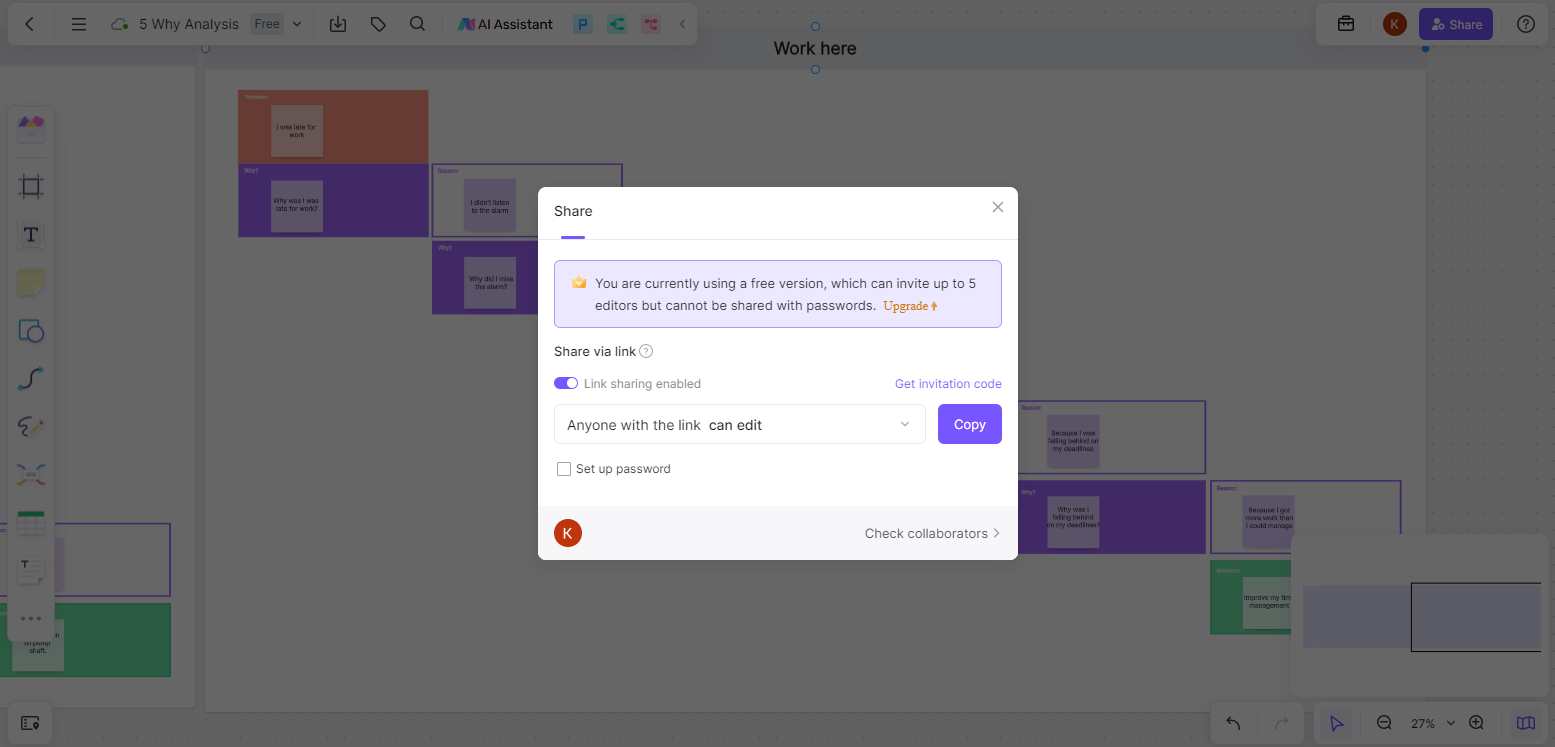Most video creators today turn to a storyboard template, whether it is for television, film, promotional ads, or instructional video materials. Back in the day, you will have to illustrate your storyboard using paper, pens, and markers. But with technological advances, you can use special software to create your storyboard template. Creating a storyboard is easier if you know how to maximize its use and where to use it.
What is a storyboard?

A storyboard refers to a graphic illustration of one's video unfolding, shot by shot. Generally, you will see several squares with images and illustrations representing a single frame. Along with the images, there are notes on what's happening in a particular scene and the dialogue for every shot. For some, it looks like a comic book of your script.
Creating a storyboard is tedious, especially if you're creating longer video content. However, a storyboard template will serve as the roadmap when creating the video and guide you throughout the production process.
Howard Hughes's 1930 film Hell's Angels, the father of special effects George Méliès, and Walt Disney are some of the early ones who adopted storyboards during pre-production and to visualize scenes. As years passed, storyboarding has become an essential part of a film production's creative process up to this day. It's even now widely used in other industries to create video content.
Storyboard use cases
The possibilities of utilizing a storyboard are endless. As the demand for video content skyrockets in today's age, you can't help but think of the areas or industries where you can use this pre-productions process. Check out the list below.
Filmmaking Storyboard

Talking about a storyboard template, they will mostly associate it with movies. In movie production, the template helps plan the production team's ideas and visualize the film's overall look. Furthermore, you can draw out video shots accordingly to ensure a hassle-free filming process. The graphics and images on the storyboard will also tell you about what the script is all about. It provides a better understanding of the story without reading more about the script.
Advertising videos Storyboard

Most video ads are relatively shorter than films of running times. Regardless, storyboards are very useful in conceptualizing the overall output of promotional videos. It helps your team polish the story flow, camera angles, dialogues, and voiceover. In most cases, a storyboard template in video ads also prompted collaboration among the production team. As you already know, making ads is not just about the director and camera personnel; editors and graphic artists also play a significant role in producing excellent video material.
Comic books Storyboard

Storyboards generally look like comic books. However, the storyboard template is essential in completing your comic book, especially if you're working on graphic novels. Besides the flow of the story, storyboarding allows comic creators to decide the comic layout, including what to include in each panel or box and the possible missing tasks before the main work starts. The key is to draw small sketches of the events you want to include in the comic book and put them in order.
Presentations Storyboard

A storyboard is beneficial to illustrate the presentation you want to achieve. You'll probably make presentations through slides, but it can be helpful to create the overall concept of your presentation through a storyboard template before transferring it into slides. A few things to consider when formulating the presentation storyboard include the context, audience, and purpose.
Animation Storyboard
Like how it's done in films and series, animations use storyboarding to convey the story close to the concept of the animation. It's one of the primary steps during the pre-production stage. While creating storyboards for animations, it's where scripts are translated into visuals. You can use storyboarding software to generate illustrations for the overall concept of the animations quickly.
Graphics Storyboard
Motion graphics and infographics also start from a storyboard template. Graphic designers generally visualize concepts and ideas before producing graphics. The storyboard allows you to see the overall picture of what the designs look like after completion. Creating graphic designs without planning is prone to revisions you don't want, as some projects can take longer. Like fashion designers have sketchbooks, you can also trust a storyboard template for better visualization.
UX design Storyboard
You can use a storyboard to gather several research findings, including user stories and characters. The template is an excellent tool for creating visual predictions and exploring how users react and perceive processes, services, or products. Most importantly, designers will understand how the audience interacts with the products. As a result, they can prioritize what's necessary for their target users.
Benefits of using a storyboard template
For some, having a storyboard is like an extra phase in producing content. However, realistically, it's a pre-production process that you must complete. Here are some reasons why one needs a storyboard template.
Visualize and organize your story
It's a visual aid that illustrates the step-by-step process of achieving your final content. Also, the storyboard template lets you and other stakeholders see the project's vision. As you already know, a few people might need help understanding concepts. Since the storyboard follows the chronological sequence of events, you can ensure that it's easier to grasp the central concept of the content.
Aids planning shots and sequences
The storyboard template includes small boxes or panels where you illustrate your desired shot or frame. It serves as your guide as you start the production stage. The order of the shots is also laid out on the storyboard, so you only have to refer to it to avoid forgetting the needed shots for the content. Most production teams even include the type of shot they want for a specific frame.
Saves time and money
Formulating a storyboard template takes time, especially if the purpose is to create long video content. However, the template saves you much time from possible revisions in the production process. Video content projects usually have allocated budgets, and going beyond the budget due to some production lapses can affect the quality of the final output. The storyboard can prevent these issues and allows a smooth creation process.
Facilitates collaboration between creative team members
Content creation is always a team effort. The pre-production stage, where storyboarding usually happens, involves brainstorming among team members to create a clear and precise storyboard for the project.
Guidelines for using the storyboard template (in Boardmix)
Technology today has given creatives an easy way to formulate a storyboard template. As you already know, there is special software you can use for the storyboard. Most of these templates are editable, which allows easy revision if necessary. Here is a simple guide on efficiently creating a storyboard with Boardmix.
Break down the story into scenes and shots
You can pick a scene from your script and create a shortlist. This includes specific camera angles to tell a story effectively. Gather all the angles you need before mapping out the storyboard template. Whether it's a short animation or a feature film, select the more complex sequences and explore the vision of the scene.
Use visual and textual cues to describe the action and dialogue
You can sketch your storyboard after gathering all the needed shots and angles for your content. You'll have to draw or insert images in every square of the storyboard template. It generally looks like a comic strip. The storyboard must contain the essential elements for every scene. It might seem like static images but ensure to think of a moving video as the result of the storyboard; hence, it pays to indicate motion. You can add the direction of the person walking using arrows. Another means would be adding words under each image to give context about the specific frame. It's easier to understand when using context clues on the storyboard.
Keep it simple and understandable
Remember not to overwhelm your illustration as much as you want your storyboard to be coherent. It might defeat the purpose of creating the storyboard template to get a clear look at the overall content. Also, keep your phrases understandable for everyone. You can include jargon that is accepted and understood by your team.
Step-by-Step Guide to Creating a Storyboard on Boardmix
1. Log in to Boardmix
Begin by logging into your Boardmix account. If you do not have an account, create one by following the registration prompts on the website.

2. Create a New Project
Click on "New Project" in the dashboard. A dialog box will appear, prompting you to name your project. Name it according to your preference or as per the requirement of your storyboard.

3. Choose a Storyboard Template
Navigate to the "Templates" section and search for storyboard templates. Select a template that suits your needs.

4. Customize Your Template
Start adding your ideas, concepts, or plans in the form of text, images, or icons to each storyboard cell. Each cell should represent a single idea or point in your story or plan.

5. Add Detailed Information
Under each cell, add detailed information about what is happening in that specific part of your story or plan.
6. Reorder Your Cells (Optional)
If you need to change the sequence of events or ideas, simply drag and drop the cells to their new positions.
7. Collaborate (Optional)
If you are working in a team, invite your teammates to collaborate. They can access the storyboard and contribute by adding, modifying, or commenting on the cells.
8. Save and Share Your Storyboard
Once you're satisfied with your storyboard, you share it with others by clicking on the "Share" button and copying the link provided.

FAQ about the storyboard template
What are the key elements of a storyboard?
In most cases, you'll have to deal with five essential storyboard elements. See the below.
- Shot and scene. You must break down your story into scenes to quickly identify them in the storyboard. Every scene has assigned numbers and titles, like 'Opening Scene, S1', and every shot within that scene also has numbers. You can assign them S1.4 for scene one, shot four, and so on until you finish all the shots for scene one.
- Panel. You can also refer to this element as the squares you see in a storyboard template. It refers to one action or moment in your template. Every drawing has its panel.
- Sequence. It represents the various shots your team must take at the same time and location. A sequence of shots will make a scene.
- Description. This refers to the description of each panel where the storyboard creator can place additional text or context clues of the drawing. The description will tell what's happening for every panel. They can include dialogues and actions.
- Camera movement. The ultimate purpose of a storyboard is to create a moving picture. With this, it's necessary to include the different camera directions for the camera operators. Wide shots, dolly shots, close-ups, zoom in, zoom out, and pan are some terms you'll see in every panel.
How do you use a storyboard effectively?
Every video or film production has its best practices for creating an effective storyboard. Before making your storyboard template, you should refer to some of the standard points below.
- You must define your goals, including a good grasp of what you hope to achieve with your video content. With concise goals, you can create informed decisions while working on the storyboard template. Consider your target audience and the message you wish to convey with your content—furthermore, the channel or medium where you'll release your content matters.
- Brainstorming will be an integral part of your storyboard. Since content creation involves a team, ensure to ask for ideas from everyone on the team and consult them on ways to create a compelling story. You can list all the ideas that come to mind and choose among those that will benefit your content. The characters, theme, setting, and props are a few things to consider here.
- Approach someone for a second opinion. They can help you identify whether the storyboard communicates efficiently. If you discover some insights you wish to add to the board, you can make the necessary revisions.







